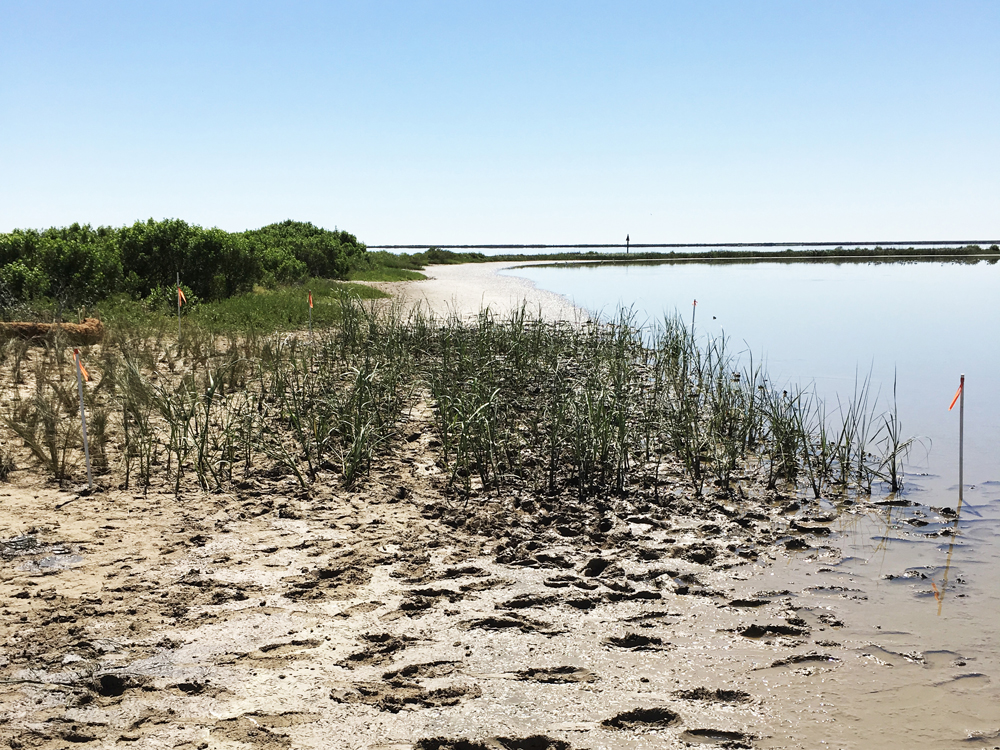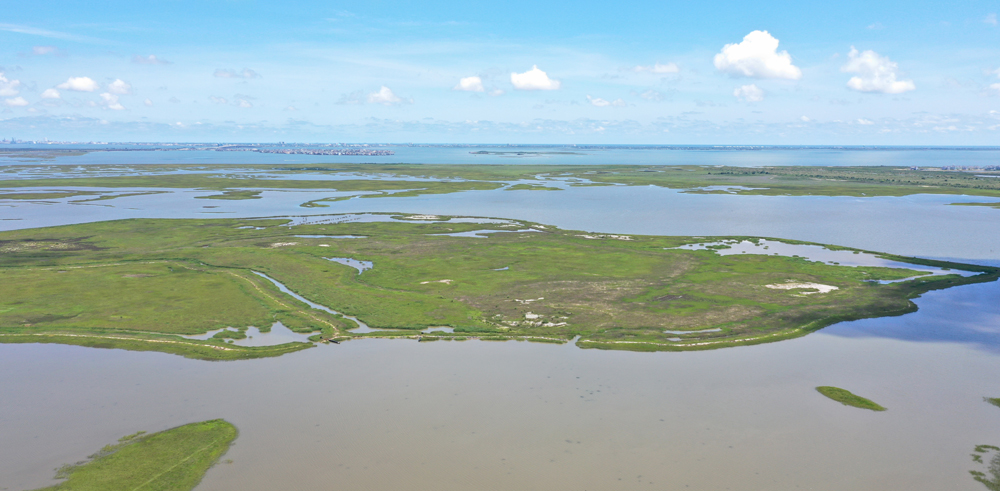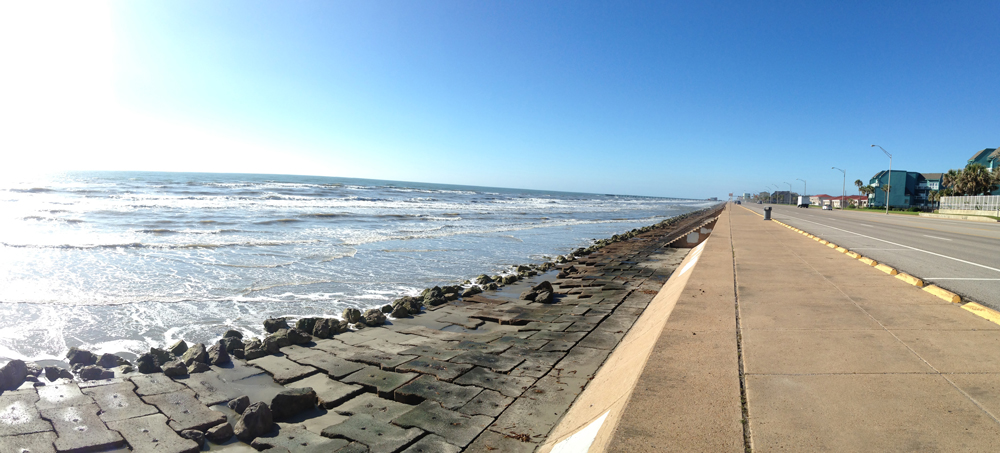This project is featured in Engineering With Nature: An Atlas, Volume 1.
Location: Galveston, Texas, United States.

Evia Island is a beneficial use of dredged material project completed in 2001 by the U.S. Army Corps of Engineers (USACE) Galveston District (SWG). Since the 1980s, Galveston Bay has lost over half its salt marsh habitat and most of its natural nesting islands due to subsidence, erosion, and development. The project site offered a large placement area for sediment excavated by a dredge during general maintenance of federal channels. Strategic placement of sediment within a confined barrier created 2,800 acres of marsh and a six-acre mixture of scrub shrub and wetland habitats. Evia Island now provides a manageable, controllable, and protected environment for rare and endangered coastal birds. This project is a prime example of using local ecosystems, natural processes, and nature-based features to engineer with and complement nature. Evia Island is now managed and maintained by Houston Audubon (HA).
Producing Efficiencies
The utilization of nature-based features has minimized the footprint associated with placing sediment in unconfined placement areas. Creating Evia Island not only provided much-needed space for placement of dredged material, it also mitigated the steady loss of salt marsh and nesting habitat. The design of the island, which features a lagoon and a wide variety of vegetation, provides habitat for multiple bird species. The island was armored with rock, and the beach was protected by a breakwater.

Using Natural Processes
Dredged material was placed within a confined boundary in an area thought to be most beneficial and favorable to local, rare, and endangered nesting birds. After the island was fully established, sustainable landscaping and cover were added to help attract birds to the island. A portion of the bird habitat was planted with trees and shrubs, and the remaining portion was left with little to no vegetation to provide a natural environment for a variety of bird species. A quiescent lagoon was incorporated with tidal flushing. In addition, rock armor provides algal substrate and crustacean habitat.
Broadening Benefits
Evia Island was constructed after the widening and deepening of the ship channel created a need for dredged material placement options. Creating the island with locally dredged material was a cost-acceptable beneficial use placement option and would eliminate the concern of bay bottom damage and negative water quality impacts. The island now attracts over 100 pairs of nesting brown pelicans every year. Additionally, it has become home to great blue herons, great egrets, snowy egrets, and tricolored herons in the vegetated area as well as black skimmers, gull-billed terns, royal terns, and Sandwich terns in the low- or non-vegetated areas. The birds use the lagoon for foraging, rearing, and loafing.

Promoting Collaboration
Evia Island was designed and built in partnership with the Port of Houston Authority: this entity was the cost-sharing sponsor of the project; SWG; the Beneficial Uses Group (BUG); and HA. This project led to the formation of the BUG as an unprecedented coalition of eight governmental agencies to identify ways to utilize dredged material in an environmentally and economically responsible manner. HA currently maintains the island.






